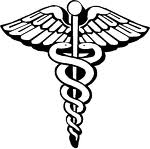Chemical waste can be collected in different types of containers. NIH chemical waste contractor will provide 3 or 5 gallons cans, plastic safety solvent (a mixture of flammable solvents) 3 or 5 gallons of blue balloons waste plastic five-gallon plastic bucket liquids and gels, and solid waste. Glass and plastic bottles of different sizes can be used for collecting waste chemicals generated in small quantities. Scientists often empties buffer or solvent for chemical waste collection.
When you add a variety of chemical wastes in their garbage container, do not create incompatible mixtures. (For example: do not mix acid and alkalis, acids, cyanides, oxidizing and organic materials). incompatible chemicals can produce heat, pressure, fire, explosion, toxic gases or flammable gases. More information:
EPA Chemical Compatibility Chart
For more information on specific threats of chemical reaction, which can be expected to mix some of the common laboratory chemicals
Examples of chemical wastes are generally collected in safety boxes solvent
Ø flammable solvents in the process of DNA synthesis and HPLC
Ø acetonitrile, alcohol, xylene, acetone, ethyl acetate, hexane, etc.
Ø mixtures of flammable solvents, with 10% or less of halogenated solvents
Note: Do not acid in a solvent metal safety cans will rust!
HPLC users can access special management of the container to connect the HPLC
Examples of chemical waste collected in the balloons are usually made of blue plastic
Ø formalin solution
Ø Set / author waste
wastewater containing ethidium bromide and other impurities Ø
Ø aqueous buffer solutions may contain small amounts of sodium azide
Ø aqueous acid or alkaline (we do not collect together)
Ø diaminobenzidine solution
Ø compounds halogenated solvents and other organic solvents
Acid / alcohol solutions
Ø Acrylamide / bisacrylamide solutions
Ø phenol / chloroform
Examples of chemical waste is usually collected in buckets 5 gallons, plastic
Ø polyacrylamide gels, often containing biological stains
Ø an agarose gel, often contain ethidium bromide staining or other
Note: If you create small amounts of chemical waste, it can be collected in each glass bottles or plastic (not the introduction of hydrofluoric acid in a glass bottle, and some halogenated solvents may soften plastic bottles and cause damage over time).
When you add a variety of chemical wastes in their garbage container, do not create incompatible mixtures. (For example: do not mix acid and alkalis, acids, cyanides, oxidizing and organic materials). incompatible chemicals can produce heat, pressure, fire, explosion, toxic gases or flammable gases. More information:
EPA Chemical Compatibility Chart
For more information on specific threats of chemical reaction, which can be expected to mix some of the common laboratory chemicals
Examples of chemical wastes are generally collected in safety boxes solvent
Ø flammable solvents in the process of DNA synthesis and HPLC
Ø acetonitrile, alcohol, xylene, acetone, ethyl acetate, hexane, etc.
Ø mixtures of flammable solvents, with 10% or less of halogenated solvents
Note: Do not acid in a solvent metal safety cans will rust!
HPLC users can access special management of the container to connect the HPLC
Examples of chemical waste collected in the balloons are usually made of blue plastic
Ø formalin solution
Ø Set / author waste
wastewater containing ethidium bromide and other impurities Ø
Ø aqueous buffer solutions may contain small amounts of sodium azide
Ø aqueous acid or alkaline (we do not collect together)
Ø diaminobenzidine solution
Ø compounds halogenated solvents and other organic solvents
Acid / alcohol solutions
Ø Acrylamide / bisacrylamide solutions
Ø phenol / chloroform
Examples of chemical waste is usually collected in buckets 5 gallons, plastic
Ø polyacrylamide gels, often containing biological stains
Ø an agarose gel, often contain ethidium bromide staining or other
Note: If you create small amounts of chemical waste, it can be collected in each glass bottles or plastic (not the introduction of hydrofluoric acid in a glass bottle, and some halogenated solvents may soften plastic bottles and cause damage over time).
via orf.od

No comments:
Post a Comment